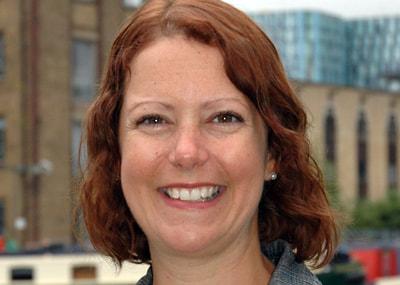FRIENDS SCHEME LOSES ANOTHER £0.5M
August 2018 - Canal & River Trust is conducting a massive charm offensive to bring more of the public to the canals, with large scale spending on advertising and social media, as part of it’s bid for replacement government cash once the current grant ends, on the basis that it is enhancing the ‘wellbeing’ of the wider public.
It has to be unfortunate that two key measures of the public’s view of the Trust show that they are yet to be convinced, as Allan Richards reports after delving into C&RT’s latest Annual Report.
Last month The Floater looked at C&RT's falling visitor numbers (NUMBERS OF VISITORS ARE NOW FALLING). We said 'Just at the time when C&RT’s whole future is balanced on it being able to show it improves the well-being of more and more non-boating canal visitors there is a distinct downward trend in numbers visiting the system'. The article noted that, before Christmas, we announced that C&RT had acknowledged that it would miss its 2017/18 target for the recruitment of 'Friends'.
The financial benefits of British Waterways becoming a charity, mainly revolved around its ability to entice the public to donate. Charity fundraising today is much more than about getting the public to throw loose change into a bucket. It's about getting donors to contribute significant sums via regular donations. C&RT call regular donors 'Friends' and envisaged that they would produce the bulk of its donations and legacies income.
C&RT's aim was to have 100,000 'Friends' and produce £10m per annum net via donations and legacies at the end of its first ten years of operation. This would neatly coincide with the start of future funding negotiations with Defra. However, 100,000 'Friends' equates to increasing regular donors at an average of 10,000 a year. After six years they should have about 60,000 'Friends'. The reality, as recorded in C&RT's 2017/18 annual report is a dissapointing 24,100.
Here we update the figures The Floater gave a year ago to incorporate 2017/18 results -
Year Active Growth Friends Over Previous Year
2012/14 * 5,541 -
2014/15 9,754 4,213
2015/16 15,800 6,146
2016/17 20,600 4,800
2017/18 24,100 3,500
*Includes the last nine months of 2012/13
As can be seen, year on year growth in 'Friends' is actually falling and is nowhere near the 10,000 needed each year. This might indicate that C&RT is suffering a retention problem or finding it increasingly difficult to recruit. Or Both.
Certainly, any regular donor will review from time to time what benefits come from membership. Whilst there are some, C&RT is not like the National Trust where many can justify membership simply by the free entry it brings to many historical buildings. Also, not being a membership charity, 'Friends' have no real say in how it is run.
On the recruitment side, the scene is becoming more difficult for charities generally. There is an increasing dislike for chuggers and the emotional blackmail techniques used to get the public to sign up.
It also has to be said that the public's faith in charities is lower now than for many years. Oxfam and RNLI getting negative press has a knock on effect and donors become increasingly concerned about how much of the money donated ends up where it should. We all hear stories of charities with overheads so high that less than half to money donated ends up being used for charitable objectives.
C&RT have managed to take this one stage further. None of the money donated over six years has been used for charitable purposes. It still spends more on recruiting donors than the income it gets in. Whilst that may be acceptable for a year or two whilst a portfolio of regular donors is built up, it is certainly not acceptable after six years.
Ruth Ruderham, recruited as Head of Fundraising a year before C&RT was formed on a salary of £70,000 per year stated "It's not often a new charity of this size and status is born. It's a once-in-a-lifetime opportunity for a fundraiser to have a start-up charity that's not tiny.
“The organisation has an ambitious fundraising target: it wants to become one of the top 100 charities by voluntary income within the next decade, which would involve raising £13m a year. It has been working with Think Consulting Solutions to achieve this goal”
Ruderham downgraded the £13m a year ten to £10m. The £10m pa was to be mainly raised by having 100,000 regular donors. It is thought that poor 'Friends' performance was a contributing factor to Ruderham, Marketing Director, Simon Salem and Chair, Tony Hales leaving the Trust.
Poor growth and high recruitment costs mean that C&RT costs in attracting donations and legacies are still higher than income. Here are the figures taken from annual reports -
Year Income Expenditure Loss
£m £m £m
2012/13 0.9 1.8 0.9
2013/14 1.2 2.2 1.0
2014/15 1.6 2.7 1.1
2015/16 2.5 3.6 1.1
2016/17 2.8 3.7 0.9
2017/18 3.4 3.9 0.5
Total 12.4 17.9 5.5
With cumulative losses of £5.5m to date comes the very real possibility that, instead of making £10m pa net by 2022, C&RT will not have managed to recoup those losses in that time period.
So how is C&RT going to explain that performance to government? How will it explain how an aspiration to become one of the top 100 charities by voluntary income has been turned on its head? One can only blame so much on market conditions ... and how is C&RT going to explain to its 'Friends' and other donors that not a single penny over 10 years has been used for charitable purposes?
Photos: (1st) Ruth Ruderham - promised 100,000 friends and £10m a year, then departed, (2nd) Simon Salem - retired but was Friends failure a factor? (3rd) Tony Hales - was the failure of the Friends scheme a factor in his departure?








